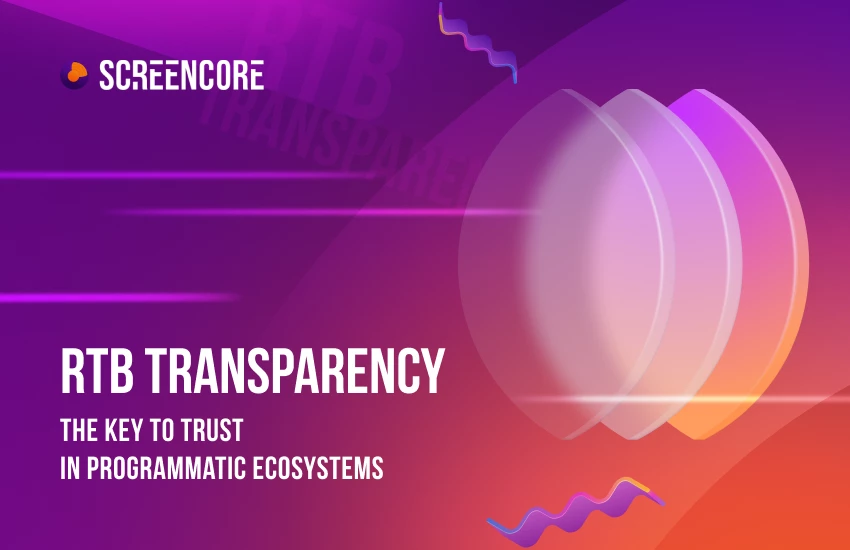Year-Round Upfronts: How Connected TV Advertising is Shifting to Always-On Programmatic Buying
.webp)
The advertising world is evolving rapidly, especially within the realm of Connected TV (CTV). Traditional upfronts, once the backbone of TV advertising, are steadily giving way to a more agile, flexible, and data-driven approach: year-round programmatic buying. This evolution is redefining how advertisers engage audiences, plan their budgets, and measure success in an increasingly digital and fragmented media landscape.
The Decline of Traditional Upfronts
For decades, the TV upfronts have been the primary method for buying ad inventory. Advertisers would commit large portions of their budgets to networks months before the broadcast season began. This model guaranteed premium placements and predictable revenues for networks but locked advertisers into rigid, often inflexible deals. However, changes in consumer behavior and the rise of streaming services are challenging this status quo.
Cord-cutting is no longer a niche trend but a mainstream movement. Viewers now consume content on-demand, across multiple devices, and via various streaming platforms. This has fragmented audiences and diminished the effectiveness of a single, annual upfront buying window. Advertisers increasingly demand the ability to be nimble and responsive to market shifts, trends, and performance data throughout the year — something traditional upfronts can’t provide.
The Rise of Year-Round Programmatic Buying in CTV
Programmatic buying, the automated process of purchasing digital ad inventory using data and algorithms, is revolutionizing CTV advertising by enabling continuous, real-time ad purchases. Instead of making one big upfront commitment, advertisers can now acquire premium CTV inventory on an ongoing basis, optimizing their campaigns based on performance and audience insights.
This always-on approach to buying unlocks several key advantages. Advertisers gain unparalleled flexibility, allowing them to pivot quickly if a campaign is underperforming or if market conditions change. They save time and resources by automating many of the traditionally manual steps involved in ad buying, such as negotiations and inventory management. Programmatic also enables precision targeting; by leveraging data signals, advertisers can reach the right audience segments at the right moments, increasing relevance and return on investment. Moreover, programmatic platforms provide detailed, real-time reporting, giving advertisers greater transparency into where their budgets are spent and how campaigns perform.
.webp)
Illustration of automated programmatic buying process from advertiser device to connected TV screen.
Streaming Platforms as Critical Players in the New Marketplace
Streaming platforms are now central to this shift toward year-round programmatic CTV buying. Companies like Roku, Amazon Prime Video, and Peacock have transformed themselves from mere content distributors into comprehensive advertising ecosystems. For instance, Roku revolutionized its upfronts by transitioning into a "full yearlong marketplace." Through its Roku Ads Manager platform, advertisers — from major brands to small businesses — can buy premium ad spots any time of year, democratizing access to coveted audiences.
Amazon’s Prime Video is another key player that has expanded the CTV advertising frontier. By introducing ads on its streaming service, Amazon created the largest ad-supported premium streaming platform in the U.S., reaching over 115 million viewers monthly. This enormous scale, combined with Amazon’s deep data capabilities, gives advertisers powerful tools to precisely target and engage audiences, further enhancing the appeal of programmatic CTV buying.
Challenges and Complexities in Programmatic CTV
Despite its advantages, programmatic buying in the CTV space is not without challenges. A primary concern is inventory scarcity. Although programmatic inventory is growing, much of the highest-value, premium CTV ad space continues to be sold through upfront deals or direct relationships, especially during peak buying seasons like the holiday quarter. Advertisers focusing solely on programmatic may find themselves competing for a limited pool of inventory or forced to settle for less optimal placements.
Another challenge is data fragmentation. With audiences scattered across multiple streaming platforms, devices, and apps, collecting and integrating audience data into a coherent, actionable form can be difficult. Without a unified data strategy, advertisers risk inefficiencies in targeting and measuring their campaigns.
Measurement itself remains a complex issue. Tracking the effectiveness of CTV campaigns and attributing sales or brand lift accurately requires sophisticated tools and methodologies. Given that CTV overlaps with other digital and linear TV viewing, advertisers must employ cross-platform measurement techniques to get a full picture of their campaigns’ impact.
Additionally, ad fraud and brand safety are risks that require constant vigilance. As with other digital channels, fraudulent inventory and inappropriate content placements can undermine advertiser trust and campaign success. Robust verification systems and partnerships with trusted platforms are essential to safeguarding ad spend.
.webp)
Data analytics and audience targeting visualization with user icons and dashboards on tablet.
Strategies for Success in the Year-Round CTV Marketplace
To navigate this new landscape effectively, advertisers should adopt a multi-pronged approach. It’s wise to diversify buying methods by blending programmatic purchases with direct deals to secure premium inventory and maximize cost efficiency. Investing in technology and data integration helps unify disparate data sources, enabling more precise audience targeting and performance insights.
Cross-platform measurement tools are crucial to understanding the true reach and impact of campaigns across linear TV, digital, and CTV. This holistic perspective enables smarter budget allocation and optimization. Brand safety must remain a top priority; advertisers should work closely with platforms and verification partners to ensure their messages appear in suitable environments and that their budgets are protected from fraud.
By embracing these strategies, advertisers can maximize the benefits of always-on programmatic CTV buying while mitigating its risks.
.webp)
Visual representing brand safety and overcoming challenges in programmatic advertising with shield and digital threats.
The Future Is Always-On Programmatic
The shift to year-round programmatic buying marks a new era for CTV advertising. It’s a move away from rigid, annual commitments to a dynamic, data-driven ecosystem that matches how consumers watch content today. Advertisers gain agility and insight, audiences receive more relevant advertising experiences, and platforms can monetize their inventories more efficiently.
For companies like Screencore, this evolution is an opportunity to lead with transparency, technology, and expertise. Screencore empowers advertisers to navigate the complex programmatic ad tech landscape with confidence, delivering better targeting, performance, and ROI.
If you want to dive deeper into how programmatic ad tech works and how Screencore can help you master the ecosystem, check out our detailed guide: Breaking Down Programmatic Ad Tech Tiers.
Ready to transform your CTV advertising strategy? Partner with Screencore today to unlock the power of year-round programmatic buying and ensure your brand stands out in the connected TV revolution. Contact us now to get started!

